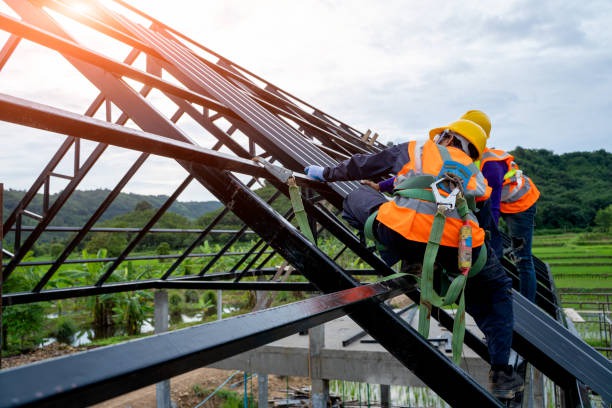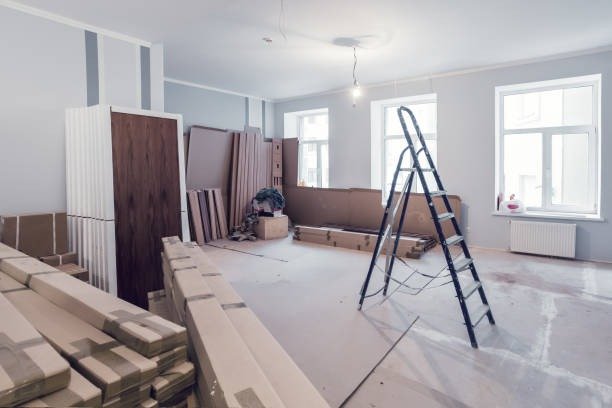Commercial roofing isn’t just about keeping the rain out—it plays a crucial role in your building’s overall energy efficiency. If you’ve been thinking your monthly utility bills are getting out of hand, your roof might be a bigger part of the problem than you realize. Many business owners overlook how much a well-designed and maintained roof can impact heating and cooling costs, even comfort levels inside. In today’s world, energy costs keep rising, and environmental concerns are front and center. So, learning how commercial roofing solutions can improve your building’s energy efficiency makes good business sense.
Why Energy Efficiency Matters for Commercial Buildings
Before we discuss roofing options, let’s consider why energy efficiency is so important. First, it saves you money. Heating, cooling, and lighting are typically the largest energy expenses in any commercial building. A drafty, poorly insulated roof lets your hard-earned dollars float right out the window—literally! Second, energy efficiency improves occupant comfort. Employees and clients enjoy a consistent indoor climate, which often means better morale and productivity. Finally, energy-efficient practices are environmentally responsible, reducing your carbon footprint.
Key Features of Energy-Efficient Commercial Roofs
Not all commercial roofs are created equal when it comes to energy efficiency. Here are some features and technologies to look for:
-
Reflective Roofing Materials: These materials (sometimes called “cool roofs”) bounce sunlight away, keeping the building cooler in summer.
-
High-Quality Insulation: Proper insulation prevents heat from escaping in winter and from getting in during summer, stabilizing indoor temperatures.
-
Green Roofing Systems: Living roofs covered with plants not only insulate but also absorb rainwater and lower the heat island effect in urban areas.
-
Advanced Roofing Membranes: Modern membranes offer waterproofing and improved thermal performance.
-
Proper Ventilation: Good airflow under the roof extends roof life and enhances efficiency.
The Science Behind Roofing and Energy Loss
A building loses most of its energy through its “envelope”—the walls, windows, doors, and especially the roof. In summer, the sun beats down on the roof, heating the surface and transferring warmth inside. In winter, if your roof insulation is lacking, heat from inside escapes easily, making your HVAC system work overtime. Thermal bridging, air leaks, and moisture buildup under the roof can all sabotage your building’s efficiency. That’s why a solid, energy-smart roof pays for itself over time.
Popular Commercial Roofing Types for Energy Efficiency
Which roofing material is right for you? Let’s break down some of the top contenders:
-
TPO (Thermoplastic Polyolefin): Known for its white, reflective surface, TPO roofing is famous for deflecting sunlight and resisting UV damage.
-
EPDM (Ethylene Propylene Diene Monomer): This durable rubber roofing is great for insulation and keeping maintenance simple.
-
PVC Roofing: Similar to TPO, PVC is another highly reflective and energy-efficient choice, and it is also resistant to chemicals and fire.
-
Modified Bitumen: Modern versions come with insulating layers and special coatings to reflect sunlight.
-
Green Roofs: These living roofs reduce stormwater runoff, insulate, and create an attractive, eco-friendly space.
How Insulation Boosts Roof Performance
Insulation is the unsung hero of energy-efficient roofing. It acts as a barrier, reducing heat transfer between the building’s interior and the outdoors. High-performance insulation materials—think polyisocyanurate, spray foam, or rigid foam boards—can offer impressive thermal resistance (R-value). The higher the R-value, the better the material resists heat flow.
Tips for Maximizing Insulation Effectiveness
-
Choose the correct thickness for your climate zone
-
Seal gaps and penetrations to avoid air leaks
-
Layer insulation for added protection
-
Work with experienced contractors
Insulation also helps control condensation that can lead to mold or structural issues, saving money on repairs and health-related concerns.
Reflective and Cool Roofing Technologies
Cool roofing systems are engineered to reflect more sunlight and absorb less heat compared to traditional roofing. They achieve this by using advanced membranes, coatings, or lighter-colored surfaces. By reducing the amount of heat transferred into the building, these roofs can lower indoor temperatures dramatically and cut back on air conditioning use.
Benefits of Cool Roofs Include:
-
Up to 30% lower energy bills in hot weather
-
Extended lifespan for your roof and HVAC system
-
Improved urban air quality due to lower heat emissions
-
Potential for government rebates or incentives
Most cool roofing systems are maintenance-friendly and can be retrofitted onto existing roofs—another reason to consider them when planning energy upgrades.
Practical Solutions for Leaky and Inefficient Roofs
If your roof is letting in water, drafts, or has visible damage, you’re paying the price in energy waste and discomfort. Thankfully, modern solutions tackle these problems effectively. For example, when looking for solutions for leaky roofs in Ancaster, businesses often find comprehensive inspections and membrane reinforcements deliver both immediate repairs and long-term energy savings. Proactive repairs, regular maintenance, and strong weatherproofing measures help create a tight building envelope, keeping the elements outside where they belong.
How to Evaluate Your Roof’s Energy Performance
Is your current roof energy-efficient? Here’s how to find out:
-
Schedule a professional energy audit focused on the roof area
-
Check insulation thickness and materials used
-
Look for visible signs of damage or aging (blistering, pooling water, rust, or leaks)
-
Assess how your building feels—are there consistent hot or cold spots?
Making these checks a regular part of building maintenance will catch minor issues before they become money pits.
Choosing the Right Contractor and Materials
Of course, even the best materials won’t perform if they aren’t installed and maintained by professionals. When selecting a contractor, experience counts. Suppose you’ve heard of a roofing company serving Hamilton with a stellar track record for energy-efficient upgrades; it’s worth consulting them about your options. Look for teams that understand local climate demands and offer full-service checks, including insulation, ventilation, and leak prevention, to customize your roof for the best results.
Long-Term Benefits and ROI of Energy-Efficient Roofing
Investing in a smarter roof isn’t just about short-term savings. Over the lifespan of your system, expect:
-
Lower energy bills every month
-
Fewer emergency repairs thanks to better weather resistance
-
Improved asset value, making your property more attractive to tenants or buyers
-
Enhanced sustainability, supporting local and global environmental goals
-
Peace of mind, knowing your investment is protected for the long haul
Over time, these benefits typically outweigh the upfront installation and upgrade costs, especially when you factor in energy rebates or incentives available in many regions.
How to Get Started on Your Energy-Efficient Roofing Journey
Ready to make a change? The journey begins with a simple inspection and professional advice. If you decide to explore commercial roofing solutions tailored to your specific building envelope, you’ll open the door to lasting savings and greater comfort. Remember, each building is unique, so partnering with experts who understand your organization’s needs and local weather patterns is key.
Steps to Take Next:
-
Contact a licensed roofing professional for an energy assessment
-
Review recommendations for upgrades or full replacement
-
Price out materials with proven energy ratings
-
Consider future maintenance needs and warranties
By focusing on the big picture, you’ll make an informed investment that delivers results for years to come.
Final Thoughts
A smart commercial roofing strategy is about more than just sheltering your building—it’s one of the most cost-effective ways to enhance energy efficiency, lower expenses, and support long-term sustainability. From cool roofs and high-quality insulation to regular maintenance and timely repairs, today’s roofing solutions empower building owners to get the most from every dollar spent. Evaluate your current setup, consult with reputable professionals, and take proactive steps to invest in a better, greener, and more comfortable future for your business property. Your roof might be the best starting point for all your energy-saving dreams!





